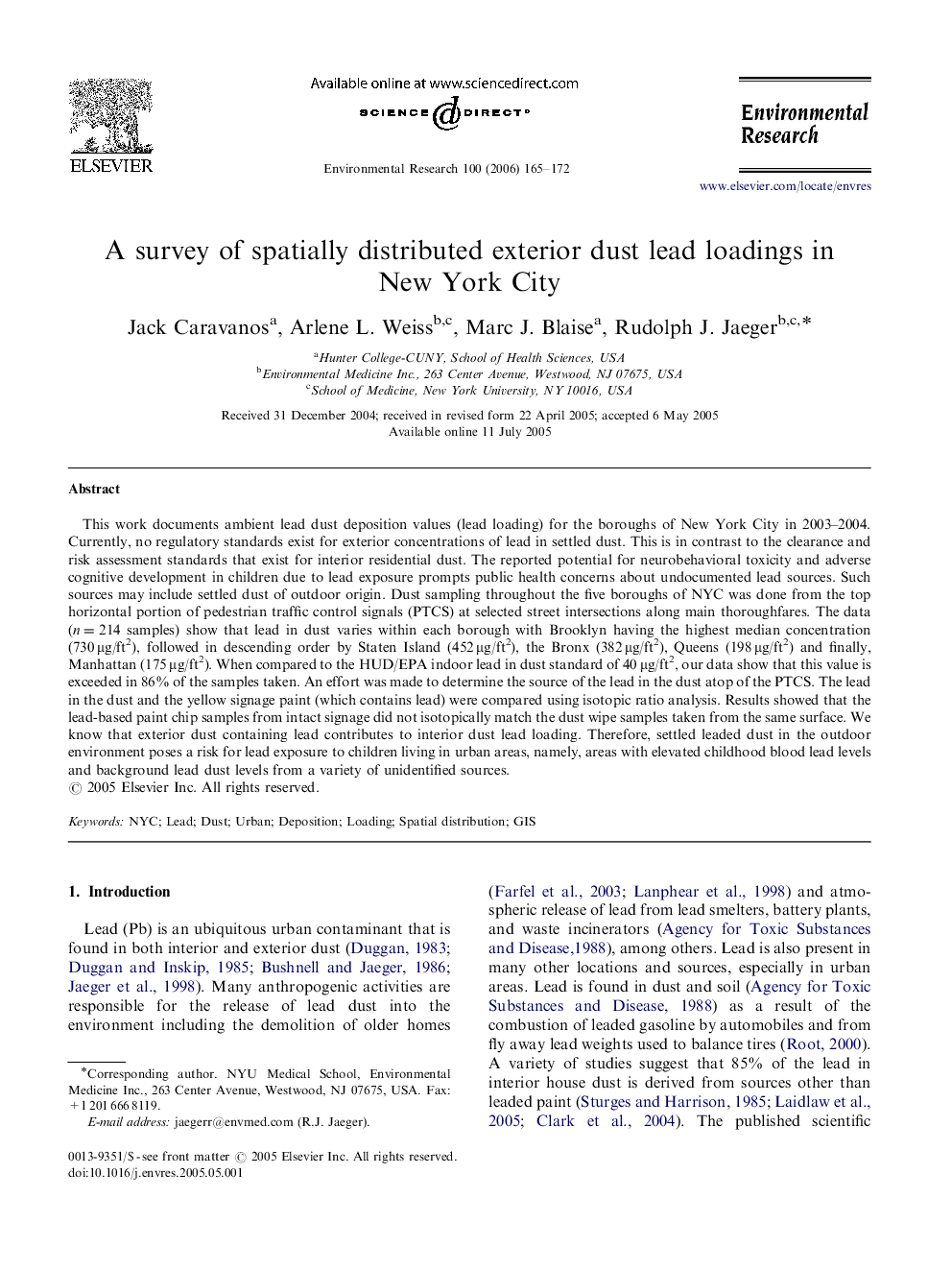| Article ID | Journal | Published Year | Pages | File Type |
|---|---|---|---|---|
| 4471040 | Environmental Research | 2006 | 8 Pages |
This work documents ambient lead dust deposition values (lead loading) for the boroughs of New York City in 2003–2004. Currently, no regulatory standards exist for exterior concentrations of lead in settled dust. This is in contrast to the clearance and risk assessment standards that exist for interior residential dust. The reported potential for neurobehavioral toxicity and adverse cognitive development in children due to lead exposure prompts public health concerns about undocumented lead sources. Such sources may include settled dust of outdoor origin. Dust sampling throughout the five boroughs of NYC was done from the top horizontal portion of pedestrian traffic control signals (PTCS) at selected street intersections along main thoroughfares. The data (n=214n=214 samples) show that lead in dust varies within each borough with Brooklyn having the highest median concentration (730 μg/ft2), followed in descending order by Staten Island (452 μg/ft2), the Bronx (382 μg/ft2), Queens (198 μg/ft2) and finally, Manhattan (175 μg/ft2). When compared to the HUD/EPA indoor lead in dust standard of 40 μg/ft2, our data show that this value is exceeded in 86% of the samples taken. An effort was made to determine the source of the lead in the dust atop of the PTCS. The lead in the dust and the yellow signage paint (which contains lead) were compared using isotopic ratio analysis. Results showed that the lead-based paint chip samples from intact signage did not isotopically match the dust wipe samples taken from the same surface. We know that exterior dust containing lead contributes to interior dust lead loading. Therefore, settled leaded dust in the outdoor environment poses a risk for lead exposure to children living in urban areas, namely, areas with elevated childhood blood lead levels and background lead dust levels from a variety of unidentified sources.
